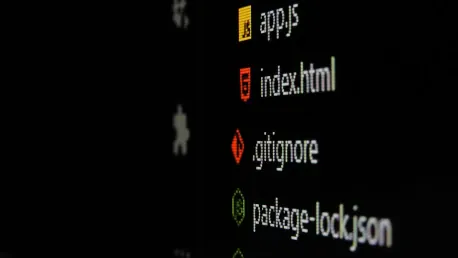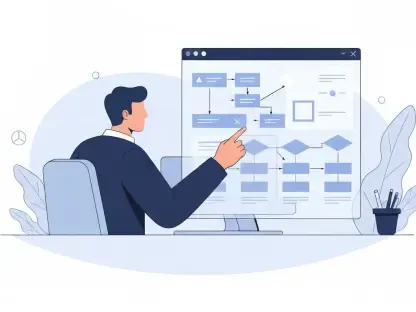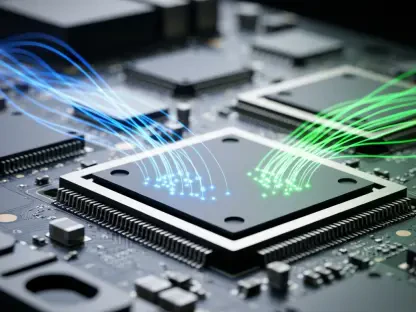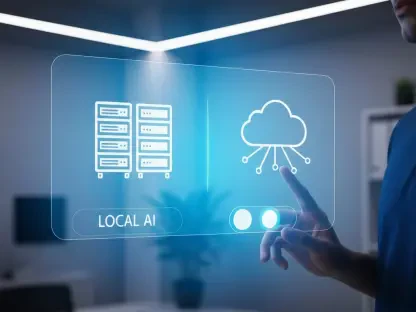Our SaaS and Software expert, Vijay Raina, is renowned for his proficiency in enterprise SaaS technology and tools. He is also known for his leadership in software design and architecture, making him an influential figure in the tech community. Today, we delve into the exciting and evolving world of “vibe coding,” exploring AI’s role in software development, the journey of programmers navigating this new landscape, and its implications for the future of coding.
What is vibe coding, and how would you define it in your own words?
Vibe coding represents an innovative programming approach where engineers leverage the intuitive and generative capabilities of AI. Rather than meticulously writing and verifying every line of code themselves, they embrace AI to sketch out and iterate on coding concepts, effectively riding the “vibes” or overarching ideas of their projects. This method allows developers to focus more on creativity and high-level problem solving, leaving AI to handle routine and repetitive coding tasks.
Can you share your initial reaction when you first heard about Andrej Karpathy’s concept of vibe coding?
When I first encountered Andrej’s concept, it felt strangely familiar even though it was a novel articulation. His description of embracing the vibes and exponential AI capabilities resonated with my own early forays into using AI for coding. It was both affirming and thrilling to realize that what I had been experimenting with was part of a larger, emerging trend in the tech community.
What prompted you to start experimenting with large language models in your programming projects in the fall of 2024?
My curiosity was piqued by the evolving capabilities of AI, especially large language models that could understand and generate code. The potential to simplify and speed up tasks that were traditionally time-consuming was irresistible. I wanted to see first-hand how these models could transform my personal projects, and as a starting point, I chose to revamp my personal website using AI.
Could you describe some of the personal projects you’ve used AI to help you code?
Absolutely. One of my earliest and most satisfying projects was developing a graphical user interface (GUI) for AI speech-to-text transcription on my Windows laptop. Another project was a JavaScript application designed to track initiatives in tabletop games. These projects allowed me to explore different functionalities and languages, with AI offering invaluable assistance in generating and refining the code.
You mentioned creating a GUI for AI speech-to-text transcription and a JavaScript app for tracking tabletop game initiatives. How did AI assist you in these projects?
For both projects, AI played a pivotal role in drafting the initial codebase. It provided step-by-step instructions and suggested modifications that significantly sped up the development process. In the case of the GUI, AI helped with layout design and integrating speech-to-text functionality. For the JavaScript app, AI was instrumental in setting up the tracking mechanics and ensuring that the user interactions were smooth and intuitive.
How would you describe your programming knowledge prior to using AI tools?
Before using AI tools, my programming skills were relatively basic. I had dabbled in HTML and Python but lacked deep proficiency. My understanding of the intricacies of coding was limited, and the prospect of undertaking complex projects was daunting. AI not only bridged this gap but also opened up new possibilities by enabling me to tackle projects I wouldn’t have otherwise attempted.
How did Prasad Naik use AI tools to convert an old iPad app to a Javascript Web app?
Prasad Naik leveraged AI tools, specifically ChatGPT, to guide him through the conversion process. Despite his unfamiliarity with JavaScript, AI provided comprehensive instructions that made the task manageable. The transformation that would have taken him a month manually was completed in just two hours with AI’s assistance, a testament to the efficiency and utility of these tools.
Naik developed a complex app that connects to a server. Can you elaborate on what the app does and how AI assisted in its development?
Naik’s complex app accesses a database of spreadsheets with detailed hardware product information. AI played a strategic role in not just coding but also in debugging and refining the connectivity and database management aspects. The AI’s guidance allowed Naik to complete the development, including deployment, in just over a week—a remarkable achievement considering the app’s complexity.
What is Jason Touleyrou’s approach to using AI-assisted coding for rapid ideation?
Jason Touleyrou emphasizes speed and iteration in his workflow. He uses AI to quickly build and test new ideas, which is crucial in brainstorming sessions when team buy-in is uncertain. For instance, he created a coffee tracking tool using Google Cloud services he hadn’t previously worked with. By relying on AI for preliminary coding and debugging, he maximizes efficiency, ensuring swift proof of concepts.
Touleyrou mentions the importance of having a well-defined idea before generating code with AI. Why does he believe this is crucial?
Having a clear idea before diving into AI-assisted coding ensures that the generated code aligns closely with the project’s goals. A well-defined plan helps streamline the coding process, making subsequent iterations more effective. Touleyrou believes this step is vital because it keeps the development focused and relevant, minimizing the risk of veering off course.
Despite the benefits of vibe coding, are there any limitations to it according to experienced engineers like Taher Vohra?
Vohra acknowledges several limitations. He points out that specifying tasks for AI can sometimes be more challenging than coding manually, especially when fine details and nuances are involved. He also emphasizes the importance of understanding the generated code to maintain quality and functionality, suggesting that overly relying on AI can lead to gaps in critical knowledge.
What advice does Vohra offer to junior engineers regarding the use of vibe coding for skill development?
Vohra suggests that junior engineers view vibe coding not just as a speed enhancer but as a learning tool. He sees it as an effective way to rapidly gain new skills by exposing engineers to different programming languages and frameworks. Vohra believes that by consistently practicing vibe coding, junior engineers can achieve a significant skillset expansion within a few months, accelerating their progression from front-end to full-stack development.









